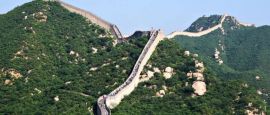China Weather, climate and geography
Weather & climate
China’s extreme size means it has a great diversity of climates, but being located entirely in the northern hemisphere means its seasonal timings are broadly comparable to those in Europe and the US. The northeast experiences hot and dry summers and bitterly cold winters. The north and central region has almost continual rainfall, hot summers and cold winters. The southeast region has substantial rainfall, with semi-tropical summers and cool winters. Central, southern and western China are also susceptible to flooding, and the country is also periodically subject to seismic activity.
China’s extreme size means it has a great diversity of climates, but being located entirely in the northern hemisphere means its seasonal timings are broadly comparable to those in Europe and the US.
The northeast experiences hot and dry summers and bitterly cold harsh winters, with temperatures known to reach as low as -20°C (-4°F). The north and central region has almost continual rainfall, temperate summers reaching 26°C (79°F) and cool winters when temperatures reach 0C (32°F). The southeast region has substantial rainfall, and can be humid, with semi-tropical summer. Temperatures have been known to reach over 40°C (104°F) although this is highly unusual, but during summer temperatures over 30°C (86°F) are the norm. Winters are mild, with lows of around 10°C (50°F) in January and February.
Central, southern and western China are also susceptible to flooding, and the country is also periodically subject to seismic activity.
Early autumn around September and October, when temperatures are pleasant and rainfall is low, is generally seen as an optimum time to visit. Spring is also popular, for similar reasons, and the many tourists visit in March or April.
Be aware that if visiting during Chinese New Year a large number of businesses will be closed and public transport, in particular rail routes, can be enormously busy.
Geography
China is bordered to the north by Russia and Mongolia; to the east by Korea (Dem Rep), the Yellow Sea and the South China Sea; to the south by Vietnam, Laos, Myanmar, India, Bhutan and Nepal; and to the west by India, Pakistan, Afghanistan, Tajikistan, Kyrgyzstan and Kazakhstan. China has a varied terrain ranging from high plateaux in the west to flatlands in the east; mountains take up almost one-third of the land.
The most notable high mountain ranges are the Himalayas, the Altai Mountains, the Tian Shan Mountains and the Kunlun Mountains. On the border with Nepal is the 8,848m (29,198ft) Mount Qomolangma (Mount Everest). In the west is the Qinghai/Tibet Plateau, with an average elevation of 4,000m (13,200ft), known as 'the Roof of the World'. At the base of the Tian Shan Mountains is the Turpan Depression or Basin, China's lowest area, 154m (508ft) below sea level at the lowest point. China has many great river systems, notably the Yellow (Huang He) and Yangtze River (Chang Jiang, also Yangtze Kiang). Only 10% of all China is suitable for agriculture.
Do you have any Feedback about this page?
© 2026 Columbus Travel Media Ltd. All rights reserved. No part of this site may be reproduced without our written permission, click here for information on Columbus Content Solutions.





 You know where
You know where